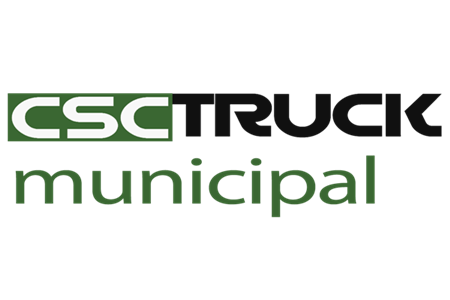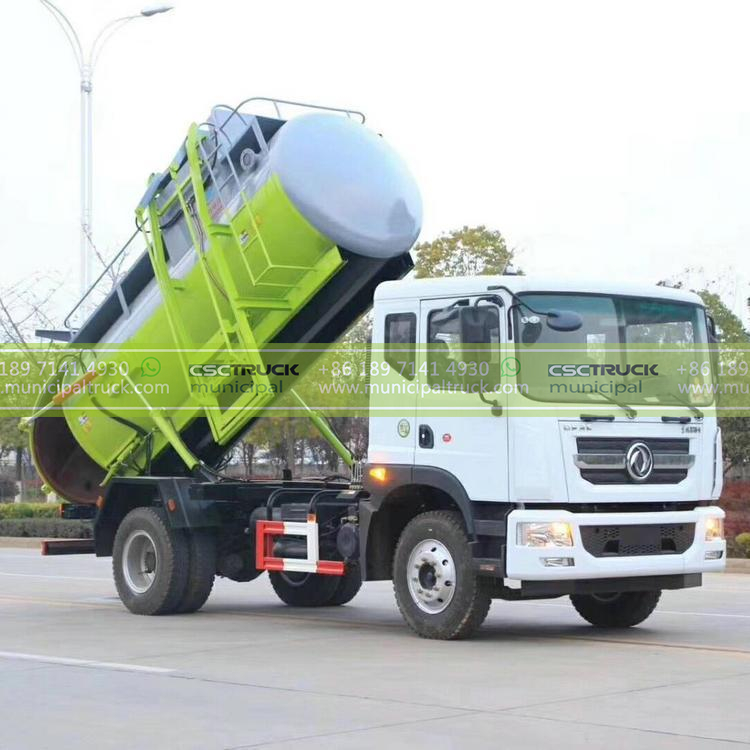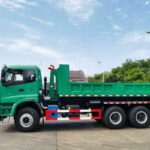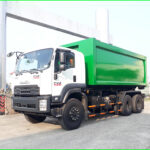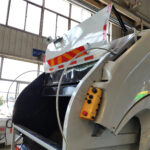In the world of waste collection, efficiency is measured not just in miles per gallon, but in stops per hour, labor costs per ton, and adaptability to different urban landscapes. Side loader garbage trucks have carved out a critical niche in municipal and private waste fleets by offering a unique combination of automation, space efficiency, and route flexibility. Unlike their rear loader garbage truck counterparts that require manual loading or hook loader garbage truck systems designed for containerized waste, side loaders excel in specific scenarios where speed, standardization, and reduced physical labor are paramount. This article examines the operational sweet spots where side loaders outperform alternative waste collection systems, their technological advantages, and how they integrate into broader waste management strategies.
1. The Mechanics of Side Loader Efficiency
The defining feature of side loader garbage trucks is their automated or semi-automated arm system, which lifts and empties standardized curbside bins without direct manual handling. This design delivers measurable productivity gains in three key areas:
Reduced Collection Time Per Stop
- Automated arms can service a bin in 15–25 seconds versus 2+ minutes for manual rear loaders
- Continuous rolling stops maintain momentum on suburban routes, unlike hook loaders requiring full stops for container swaps
- Integrated scale systems record weights without delaying the dumping process
Labor Optimization
- Single-operator capability eliminates the 2–3 crew members needed for rear loaders
- Reduced injury rates by removing repetitive lifting motions that account for 38% of waste worker injuries
Payload Density
- Pre-compaction systems compress waste during loading, achieving 25–30% greater density than non-compacting alternatives
- Balanced weight distribution from side-loading design allows maximum legal loads without axle overages
These factors combine to make side loaders 68% more cost-effective per ton collected than manual systems in standardized residential areas, according to Waste Advantage Magazine benchmarks.
2. Ideal Deployment Scenarios for Side Loaders
While versatile, side loader garbage trucks deliver maximum ROI in specific environments:
Suburban Neighborhoods with Curb-Side Bins
- 95+% bin compatibility rate with wheeled carts (64–96 gallon capacity)
- Low overhead obstructions (tree branches, power lines) that could interfere with lifting arms
High-Density Urban Cores
- Narrow street navigation where rear loaders struggle with turning radius
- Parallel parking efficiency without blocking traffic lanes during collection
Gated Communities and Planned Developments
- Predictable bin placement aligned with truck-side collection zones
- Reduced noise complaints from automated systems versus manual loading clatter
Notably, side loaders underperform in areas with:
- Non-standardized containers (common in older cities)
- Bulk waste items exceeding bin capacities
- Steep inclines affecting arm stability
3. Technology Advancements Enhancing Side Loader Performance
Modern side loader garbage trucks incorporate intelligent systems that address historical limitations:
Vision-Assisted Automation
- LiDAR bin detection maintains operation in fog/snow where cameras fail
- AI-powered grabber adjustment compensates for improperly placed bins
Dynamic Route Optimization
- Fill-level sensors prioritize nearly-full bins while skipping empties
- Traffic pattern algorithms adjust collection sequences to avoid congestion
Ergonomic Upgrades
- Electro-hydraulic controls reduce operator fatigue by 40% versus manual levers
- Active suspension leveling prevents load shifts on uneven terrain
These innovations have expanded suitable deployment zones by 22% since 2020, blurring the line between traditional side loader and rear loader garbage truck territories.
4. Cost-Benefit Analysis vs. Alternative Systems
The economic case for side loaders becomes clear when comparing lifecycle costs:
| Metric | Side Loader | Rear Loader | Hook Loader |
|---|---|---|---|
| Stops per 8hr shift | 1,200 | 400 | 150 |
| Labor per truck | 1 operator | 2–3 crew | 1 operator |
| Annual maintenance | $18K | $12K | $25K |
| Container damage rate | 2% | 15% | 8% |
Data sourced from National Waste & Recycling Association 2023 Fleet Report
The side loader garbage truck dominates in high-stop/low-volume scenarios, while hook loader garbage trucks remain preferable for construction debris and rear loader garbage trucks for bulk item collection.
5. Specialized Variants for Niche Applications
Manufacturers now offer tailored side loader configurations:
Dual-Stream Recycling Models
- Split-body designs with separate compartments for paper/containers
- Optical sorting that identifies and rejects contamination during loading
Commercial Hybrids
- Retractable arms that convert to manual loading for dumpster service
- Extended reach kits for servicing bins behind parked cars
EV Transition Platforms
- 800V battery systems providing 80+ mile range
- Regenerative braking recovering 15% energy during stop-and-go routes
These adaptations ensure relevance across evolving waste streams that might otherwise require separate rear loader garbage truck or hook loader garbage truck assets.
6. Future-Proofing Fleet Deployments
As waste management evolves, side loaders are adapting through:
Smart City Integration
- 5G-connected diagnostics enabling predictive maintenance
- Municipal API links adjusting routes for special events in real-time
Material Recovery Enhancements
- Onboard optical scanners tagging recyclables for processing optimization
- Robotic pre-sorting arms removing contaminants before compaction
Cross-Fleet Interoperability
- Shared data platforms with hook loader garbage truck teams managing construction debris
- Container standardization initiatives allowing rear loader garbage truck backup during peak periods
The side loader garbage truck has cemented its role as the backbone of residential collection—not by replacing rear loader versatility or hook loader strength, but by perfecting the science of high-volume, low-touch waste logistics. As urban density increases and labor shortages persist, its value proposition will only strengthen, ensuring continued dominance in the routes where precision and pace matter most.
